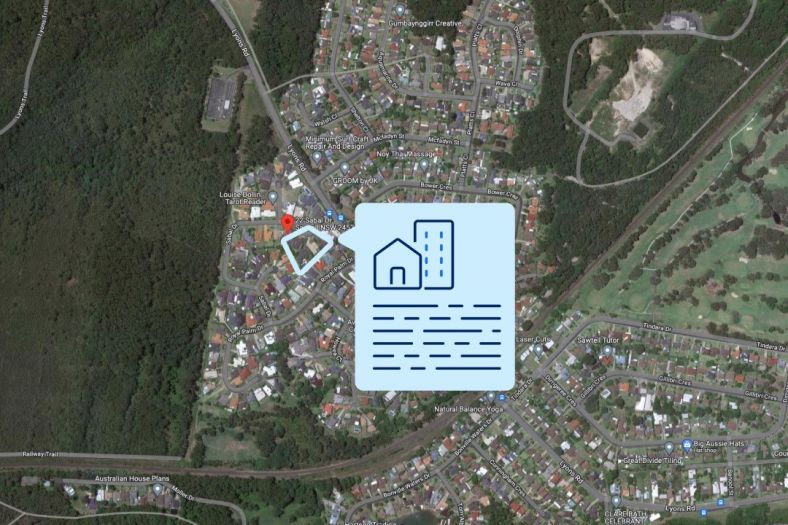Key information
Strata properties are different to a typical freestanding property, and the responsibilities that come with owning a strata property should also be considered before purchasing.
Before buying a strata property:
read the by-laws to check the community rules match your lifestyle
get a strata report and a building inspection report done
Also think about:
- what you will own and what you will share ownership of
- the ownership costs (levies)
- the reputation of the developer and builder, and strata manager
- what the parking is like
- public transport options and local amenities
Did you know?


What is strata?
A strata scheme is a building or group of buildings that has been divided into 'lots' such as an apartment, townhouse or villa. When you buy a lot, you also share ownership of common property with other lot owners. This may include shared gardens, external walls, roofs, driveways and stairwells. Read more about what you will own.
In strata schemes, you own the inside of an individual property, also called a ‘lot’ or ‘lot airspace’.
There can be small differences in what you own, depending on the scheme, but it usually includes:
- internal walls
- lights
- curtains and blinds
- carpets
- toilets and baths
- kitchen cupboards and bench tops.
What about common property?
You will share ownership of common property with other property owners. Common property includes spaces like:
- driveways
- swimming pools
- gardens.
It also includes parts of a building like:
- common walls
- external doors
- roofs
- pipes
- electrical wiring.
It is important to know if common property makes up part of your property. This will affect the kind of changes you can make, and what approvals you would need.
Things considered common property can change from one scheme to the next. Check the strata plan and your by-laws to be sure.
Owners corporation
An owners corporation includes all the property owners in a scheme. It manages the scheme’s buildings and common property.
You automatically become part of the owners corporation if you buy in strata.
Strata committee
Members of the owners corporation elect a strata committee each year. This happens at their annual general meeting (AGM).
The strata committee decides on the day-to-day running of the scheme. They do this on behalf of the owners corporation.
Strata committees always include a chairperson, secretary, and treasurer. Secretaries are often the first point of contact for owners and residents.
Strata manager and building manager
Being a strata committee member is voluntary and can take time. Committee members often hire a strata manager (also known as a strata managing agent) to help.
The strata manager can take care of correspondence, meetings and AGMs, levies, enforcing rules (by-laws), record keeping and finances.
The scheme can hire a building manager (sometimes called a caretaker or facilities manager) for maintenance. This can include mowing the lawns, taking the bins out, and small repairs to common property.
Strata schemes do not have to hire a strata manager or building manager.
For more information on strata and building managers, see who’s who in strata.

Who's who in strata
Understand the difference between strata managers and building managers, and owners corporations and strata committees.
Also includes definitions of the positions on strata committees.
Before buying a property in a strata scheme, check the scheme by-laws. By-laws are a set of rules that residents in the scheme must follow.
Make sure they suit your lifestyle. For example:
- rules for having a pet in a strata scheme
- the approval process to make changes to your lot
- parking rules
- areas where children can play
A scheme’s by-laws cannot be harsh, excessive or oppressive, or conflict with any law. Otherwise the NSW Civil and Administrative Tribunal can reject them.

Rules for living in strata
Owning pets, attending meetings, getting repairs and renovations done, parking and more.
Strata levies
Strata levies are fees that pay for management and upkeep of the scheme. All property owners must pay levies to the owners corporation.
Strata levies should be part of your budget when planning to buy a strata property.
Each strata scheme decides how often levies need to be paid. They are usually paid quarterly.
Strata levies are paid into ‘funds’ that the owners corporation manages.
There is an ‘administrative fund’ for day-to-day costs (e.g. gardens, maintenance, strata management fees). There is also a ‘capital works fund’ for major building work (e.g. replacing roofing, lifts or fencing).
To work out how much money is needed for the capital works fund, each scheme must have a ‘10-year capital works plan’. It sets out what levies should be charged in the future, together with annual budgets.
Consider the age and condition of the strata scheme to allow for future costs.
Also assess whether the current levies are reasonable.
Low levies could mean a steep rise in future fees. Special levies may be needed if there isn’t enough money to pay for large capital works or unforeseen expenses.

Budgets and finances
Understand what your strata levies will pay for, and what to do if you ever can't pay.
Get these reports done
Strata report
Get a strata search report done before you buy.
This will reveal issues about the complex that you should consider before deciding to buy.
The strata search report includes information from the strata roll and will give important details on:
- the finances of the scheme
- whether the scheme has good insurance, and the date it was last checked
- building defects and planned works
- safety requirements
- existing or pending legal matters
- meeting notes, showing how the scheme is run and evidence of disputes.
How to get a strata report
1. Get a professional to do it
Most people prefer to hire a professional strata searcher or conveyancer.
If you are thinking about hiring a strata searcher, get multiple quotes and compare:
- the cost
- when the report can be delivered
- what will be included in the report
- if and how they will go through the report with you
- the person or company’s experience
2. Do it yourself
You can inspect the strata records yourself.
Use the real estate agent to get the contact details of the strata manager for the property (or secretary of the owners corporation if there isn’t a strata manager).
You will need the seller’s permission (via the real estate agent) and must pay a fee to the owners corporation.
Building inspection report
You can get a building inspection of the property you want to buy. This is a physical inspection of the property. It will provide details about its condition. You can also ask for a pest inspection.
If you have hired a building inspector, contact the property's real estate agent or seller.
Ask to book a time and date for the inspection. If the property is occupied, the agent will coordinate with the residents before they can confirm the inspection date.
You can find out if any existing pre-purchase inspection reports have been completed for somebody else. Ask the real estate agent about this.
This can save you money. However, it’s best to get your own report done to make sure you get the detail you need before you decide to buy.
It is important to be aware of any registered interests affecting the property title.
For example, this might include a right of way easement, which can allow people who aren’t part of the strata scheme to access the land, and may restrict building or renovations on the property.
There are other types of property interests that can give people rights over the land.
The contract for sale of land will include the titling information affecting a strata lot and common property. You should ask the real estate agent advertising the property for sale for a copy of the contract, and ask your solicitor or conveyancer to review this document and explain it to you.
You can also access land titling information (like by-laws, the strata plan, easements) from NSW Land Registry Services (LRS), who maintain the land registry for all properties in NSW.
You will need to use an information broker to purchase copies of titling information, from LRS’ approved list.
Financial health of the strata scheme
You can understand the financial health and structure of a strata scheme by obtaining a section 184 certificate from the owners corporation.
A section 184 certificate will give information about the strata scheme including:
- the names and addresses of the strata committee members, the managing agent and building manager (if applicable)
- the levies to be paid by the owners
- any outstanding levies for the lot you are interested in
- the proposals for funding the matters set out in the 10-year capital works plan
- the address where the records and financial statements can be viewed
- details of any by-laws made by the owners corporation within 6 months before the date of the certificate that have not been lodged at NSW Land Registry Services as at that date
- whether or not a strata renewal committee has been established to sell or redevelop the strata scheme.
A member of the strata committee or the strata managing agent must give the certificate under the owners corporation seal, and a fee is payable. View the NSW Fair Trading approved Section 184 certificate (PDF 611.44KB).
Note, if a levy is outstanding before the certificate is given and it is not shown on the certificate, the purchaser is not responsible for the payment.
New strata schemes
The developer or builder (known as the 'original owner) acts as the owners corporation during the initial period. This starts when they register the strata plan and ends when at least one third of the unit entitlements are sold.
Owners should be aware of restrictions on what the original owner can do during time. This includes:
- changing or cancelling the by-laws or making extra by-laws that do not give a right or obligation to all owners or all lots
- altering common property (except under a development contract)
- incurring a debt for more than is set aside in the owners corporation's funds to repay
- borrowing money or giving securities
- appointing a strata managing agent or building manager / caretaker to continue after the first Annual General Meeting (AGM)
- selling any common property.
We are in the process of moving strata advice from Fair Trading's website to this one. In the meantime, see Fair Trading's website for more information regarding buying off the plan
Popular pages
Serving on a strata committee

The strata committee is a group of people who have been given authority by the owners to make decisions on the day to day running of your building or complex.
There are a range of positions and responsibilities.
Living in strata

Understand your rights, learn how to request repairs, and how to resolve any issues.
Knowing how strata works will help you to get the most from your property and help resolve any issues before they become disputes.
Strata search

Our strata search allows you to find publicly available data on any of the state’s 85,000 schemes. This includes strata plan number, strata address, strata registration, lot information, date of the last AGM, and when the scheme has completed the last annual reporting.
Join our mailing list
Find out about strata announcements, recently published resources and more. You can also subscribe to other newsletters of interest.
Sign up to the Strata and community scheme updates newsletter
